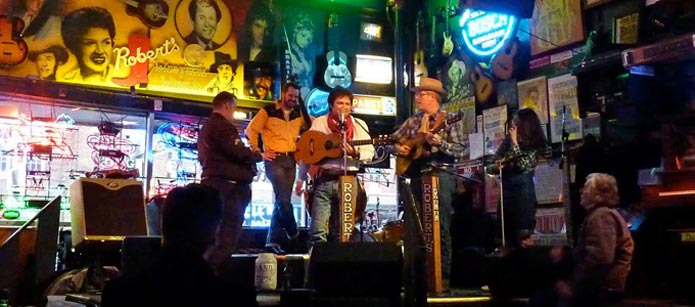The Context of Popular Music Performance Architecture


The debate regarding what can be defined as popular music is a complex one, engaging history, society, geography, technology and commerce. For this study, popular music is characterised as widely appealing music, encompassing a large variety of musical genres that has been disseminated primarily via the media as a commodity through publication, recording, and broadcasting. It is a sphere of activity in which the public is actively involved in its critical appreciation, sponsorship, and creation. It therefore begins in the late eighteenth and early nineteenth centuries with the availability of inexpensive sheet music tied into popular performers and songs, expanding rapidly via radio and television in the twentieth century, and more recently into digital media. This research will not be restricted to specific music genres such as jazz, pop, rock‘n’roll, soul, or rock as there are many crossovers between musical movements that often, consecutively and simultaneously, occupy the same venue, however, the gestation of specific music scenes will be a part of the study as the character of the space and place they occupy is frequently part of the sphere of influence that has generated the building form.
All popular music begins in informal venues, even on the street – but its eventual success and widespread popularity depends on its migration to more formal venues. This is because its popularity leads inevitably to the commercial need to formalise a revenue process (initially to pay performers and composers, but as audiences grow, the many others engaged in enabling the performance) such as ticket sales for admission to the event. As popular music performance became more formalised in the nineteenth and early twentieth centuries, small venues in drinking and eating-houses became identified as juke joints, honky-tonks, and nightclubs. Larger venues included dance halls, concert rooms, music halls and Vaudeville theatres. External venues such as pleasure gardens, bandstands and amphitheatres made use of more peripatetic facilities. The commodification of popular music via global media companies promoting top-line artists as large-scale, touring ‘stadium’ acts is an undoubted aspect of its development. However, popular music also inspired famous festivals such as Monterey (1967) and Woodstock (1969) that have an historical and developmental importance that is at least as relevant as the permanent building venues. These events were powerful vehicles for communicating non-commercial ideals - popular music artists and audiences are not homogenous and are frequently fractured and rebellious, instinctively resisting rather than accommodating big business ambitions.
First, because there has been a resurgence in the commercial importance of live performance that has resulted in a dramatic growth in the development of dedicated popular music buildings. The shift away from recorded music as the principle income of major artists (led by file sharing and downloads) and changing audience demands (due to the appetite for new leisure experiences) has led to much higher budgets for concert tours, which has in turn led to the creation in the last decade of new dramatic buildings designed especially to cater to this trend. Second, because the economics of live popular music are in transition, with large international promoters such as AEG Live and Live Nation taking a much greater share of the business at all levels. On the positive side this has led to greater investment in higher quality venues but on the negative side this has had a significant adverse effect on independent venues, now not only in competition with these ‘branded’ chains, but also frequently unable to obtain the most popular artists, who regularly sign exclusive deals with the promoter for both venues and ticketing. Changes in legislation (such as the UK’s 2005 Licensing Act, which resulted in onerous and uneven restrictions on small venues) has also led to many local venues, even very famous and historic ones being placed in serious danger of closing. An objective study of the architectural value of these historic places will draw attention to what might many believe is already a disappearing legacy.
Call the department
+44 (0)151 795 0500